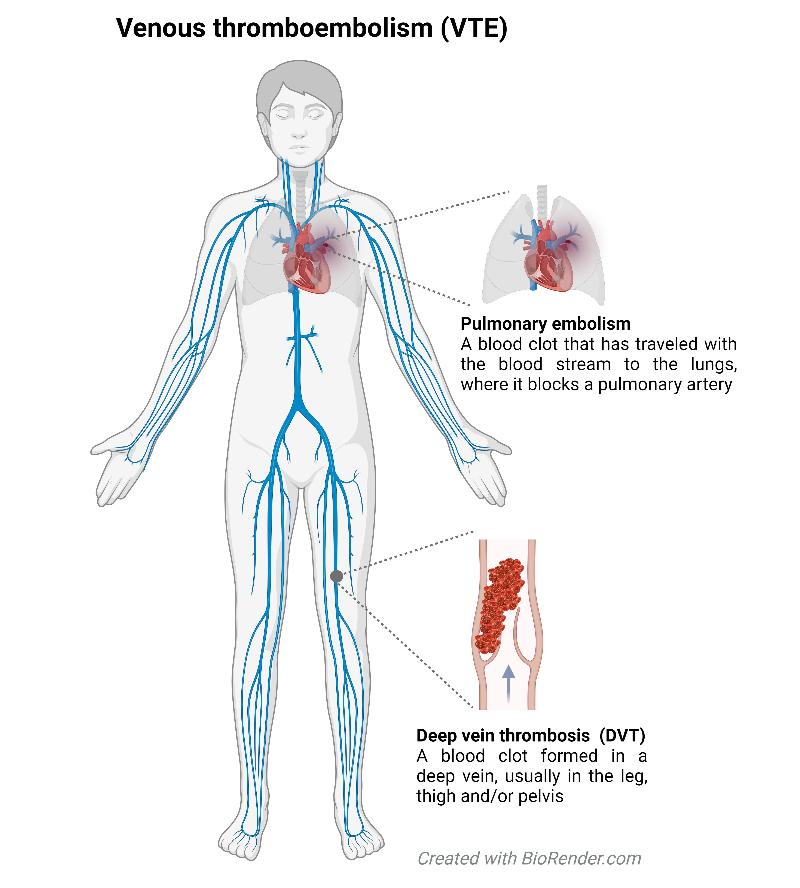Venous thromboembolism (VTE)
Thrombosis occurs when a blood clot forms on the inside of a blood vessel, obstructing the flow of blood through the circulatory system.

While arterial blood clots cause heart attacks and strokes, blood clots may also form in the slow-flowing venous system.
Veins are blood vessels that carry blood back to the lungs and heart from the body’s different organs. A deep vein thrombosis is a blood clot formed in a deep vein, usually in the leg, thigh and/or pelvis.
When blood flow through a vein is obstructed by a blood clot, the increased venous pressure below the clot causes swelling and pain in the affected limb.
A part of the blood clot may also break off and travel with the blood stream until it lodges in the lung vessels. This is called pulmonary embolism, and may result in shortness of breath, chest pain, heart failure and death.
Collectively, deep vein thrombosis and pulmonary embolism are called venous thromboembolism (VTE).